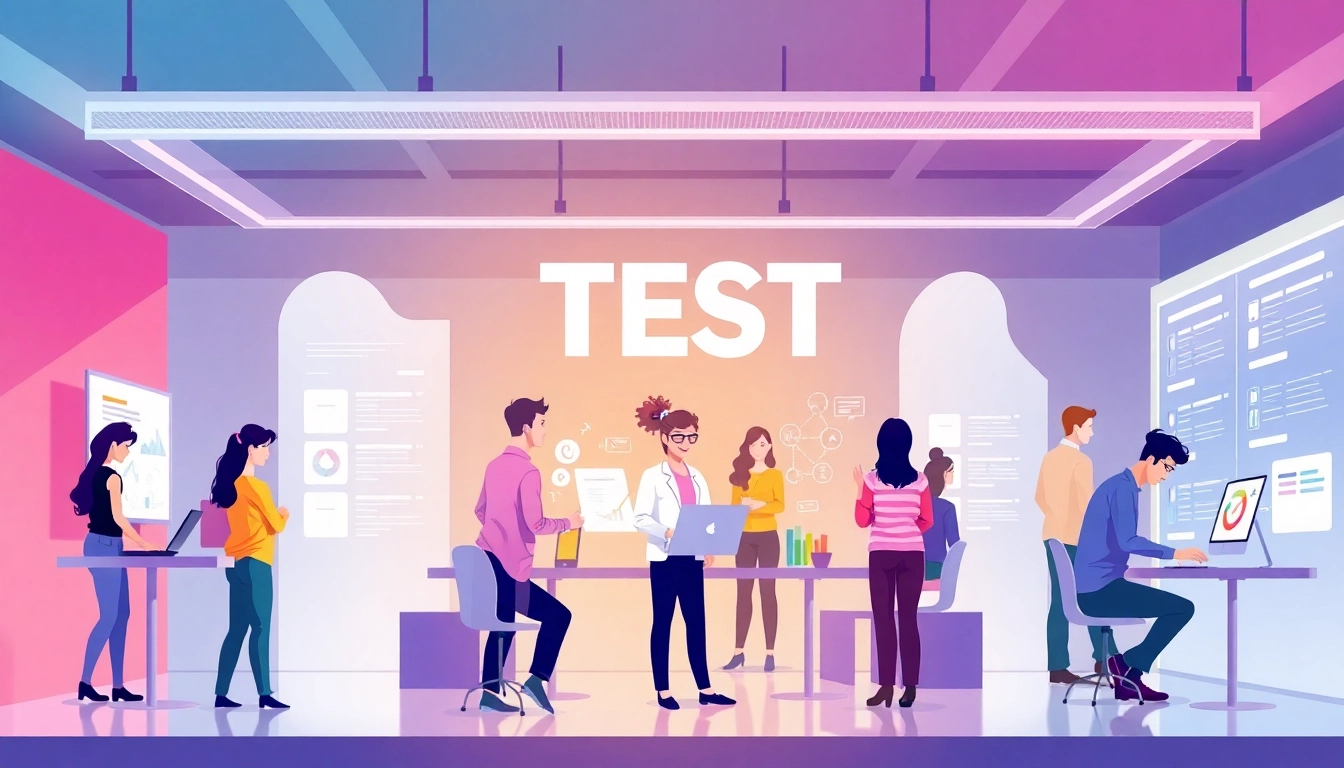
The Concept of Aptitude Tests
Understanding Aptitude Tests
Aptitude tests have long been utilized in various contexts, from educational settings to recruitment processes. At their core, they aim to measure an individual’s ability to perform specific tasks or skills, making them a critical component in determining career fit and potential. Traditionally, these assessments have focused on logical reasoning, numerical capability, and verbal proficiency. However, the evolving landscape of work demands a more nuanced approach to skills assessment—enter the concept of a new kind of aptitude test.
Types of Aptitude Tests
A variety of aptitude tests exist, categorized based on the skills they assess. Here are some notable types:
- Numerical Reasoning Tests: These assess the ability to work with numbers, interpret data, and solve mathematical problems. They are particularly useful in fields that require strong quantitative skills.
- Verbal Reasoning Tests: These evaluate comprehension, interpretation, and reasoning using language. They’re crucial for roles that demand proficient communication abilities.
- Spatial Reasoning Tests: These tests gauge how well individuals can visualize and manipulate objects in a 3D space, relevant in engineering and design professions.
- Mechanical Reasoning Tests: These assess an individual’s understanding of mechanical principles and their ability to apply such knowledge practically.
- Abstract Reasoning Tests: These focus on patterns and logical sequences, requiring test-takers to identify relationships among various elements.
Key Features of a New Kind of Aptitude Test
The modern approach to aptitude testing innovatively incorporates technology, psychology, and real-time data analysis. Key features include:
- Dynamic Metrics: Unlike traditional tests that offer static results, new aptitude tests adjust in real-time based on responses, providing a more personalized assessment.
- Interactive Scenarios: Engaging candidates with realistic job tasks or situational judgment tests allows for a better understanding of candidates’ capabilities in real-world contexts.
- Holistic Evaluation: These assessments factor in not just cognitive skills but also emotional intelligence and behavioral traits, leading to a more comprehensive evaluation.
- Feedback Mechanisms: Immediate feedback allows individuals to understand their strengths and areas for improvement, facilitating ongoing professional development.
Benefits of Using a New Kind of Aptitude Test
Enhanced Predictive Validity
The validity of assessments refers to how well they predict an individual’s future performance in specific tasks or roles. A new kind of aptitude test leverages advanced analytics and real-world scenario testing to enhance predictive validity significantly. By assessing skills in contexts similar to actual workplace situations, employers can have greater confidence in the candidates’ potential job performance, increasing retention rates and overall job satisfaction.
Customized Assessment Experiences
Today’s candidates come from diverse backgrounds and possess various competencies. Customized assessments can cater to individual strengths and weaknesses, ensuring a fairer evaluation process. By utilizing adaptive testing technologies, organizations can create tailored assessments that resonate with specific job requirements or industry standards, reducing biases and providing a level playing field for all applicants.
Real-time Feedback Mechanisms
Feedback is a critical aspect of any assessment process. With traditional tests, candidates often receive results long after completion, which limits their ability to learn and adapt. However, modern aptitude tests provide real-time feedback, allowing individuals to identify areas of strength and weakness instantly. This immediacy enhances the learning experience and encourages continuous professional development.
Implementing a New Kind of Aptitude Test in Organizations
Steps for Successful Adoption
Integrating a new kind of aptitude test within an organization involves strategic planning. Key steps include:
- Assessment of Needs: Identify what specific skills and attributes are essential for roles within your organization.
- Selection of Tools: Choose suitable aptitude testing tools that align with your organizational goals and workforce needs.
- Training for Implementers: Ensure HR personnel and hiring managers are adequately trained to administer and interpret the tests effectively.
- Pilot Testing: Conduct trial assessments to gauge effectiveness and gather feedback from both candidates and assessors.
- Full-scale Implementation: Roll out the new tests organization-wide, continuously monitoring for effectiveness and making adjustments based on feedback.
Integrating Technology in Assessments
Technology plays a crucial role in modern aptitude assessments. Cloud-based platforms facilitate easy access to testing tools, while machine learning algorithms enhance personalization and adaptivity in test formats. Virtual or augmented reality scenarios can provide immersive experiences that better simulate job environments, allowing candidates to demonstrate their capabilities in context.
Measuring Success and Outcomes
To evaluate the effectiveness of a new aptitude testing method, organizations should track several key performance indicators (KPIs), including:
- Candidate Retention Rates: Higher retention suggests that the tests are effectively matching candidates with roles suited for their skills.
- Employee Performance Metrics: Compare employee performance across different departments to identify any correlation with assessment results.
- Candidate Feedback: Collect subjective feedback from participants regarding their experience with the aptitude tests.
Best Practices for Administering Aptitude Tests
Creating a Supportive Environment
A supportive environment is crucial for proper assessment. Organizations should ensure that candidates are comfortable and informed about the testing process to reduce anxiety. Clear communication regarding the purpose of the tests and what they entail can foster a culture of openness, promoting system-wide buy-in.
Ensuring Fairness and Accessibility
Equity in assessment processes is essential for a diverse workforce. Organizations should design tests that are accessible to all candidates, regardless of their backgrounds. This includes providing accommodations for individuals with disabilities, ensuring that technical requirements are not barriers, and offering translations or alternative formats when necessary.
Interpreting Results for Talent Development
Once aptitude tests are administered, interpreting results accurately is crucial for effective talent management. Organizations should implement structured interpretations that align test outcomes with development plans. This could include customized training programs, mentorship opportunities, or career pathing initiatives that help individuals capitalize on their strengths while addressing developmental gaps.
Future Trends in Aptitude Testing
Emerging Technologies and Skills Assessment
The rapid evolution of technology is influencing how aptitude tests are designed and administered. Artificial intelligence (AI) and advanced data analytics will shape the future of assessments, enabling organizations to analyze vast amounts of data efficiently. These technologies promise greater accuracy in measuring individual potential and identifying skill gaps.
The Role of AI in Aptitude Testing
With AI’s capabilities, organizations can expect more sophisticated assessment tools that estimate not only hard skills but also soft skill competencies like emotional intelligence and teamwork. AI can also facilitate continuous testing, where employees are assessed regularly, allowing for development to be an integral part of the organization’s culture rather than a once-a-year event.
Shaping Career Paths with Innovative Testing Methods
Aptitude testing is no longer just a checkbox in the recruitment process. Innovative testing methods can guide organizations in crafting personalized career paths for their employees based on identified strengths and potential. As assessments become more engaging and relevant, they can play a pivotal role in shaping the future workforce, aligning personal goals with organizational objectives.







